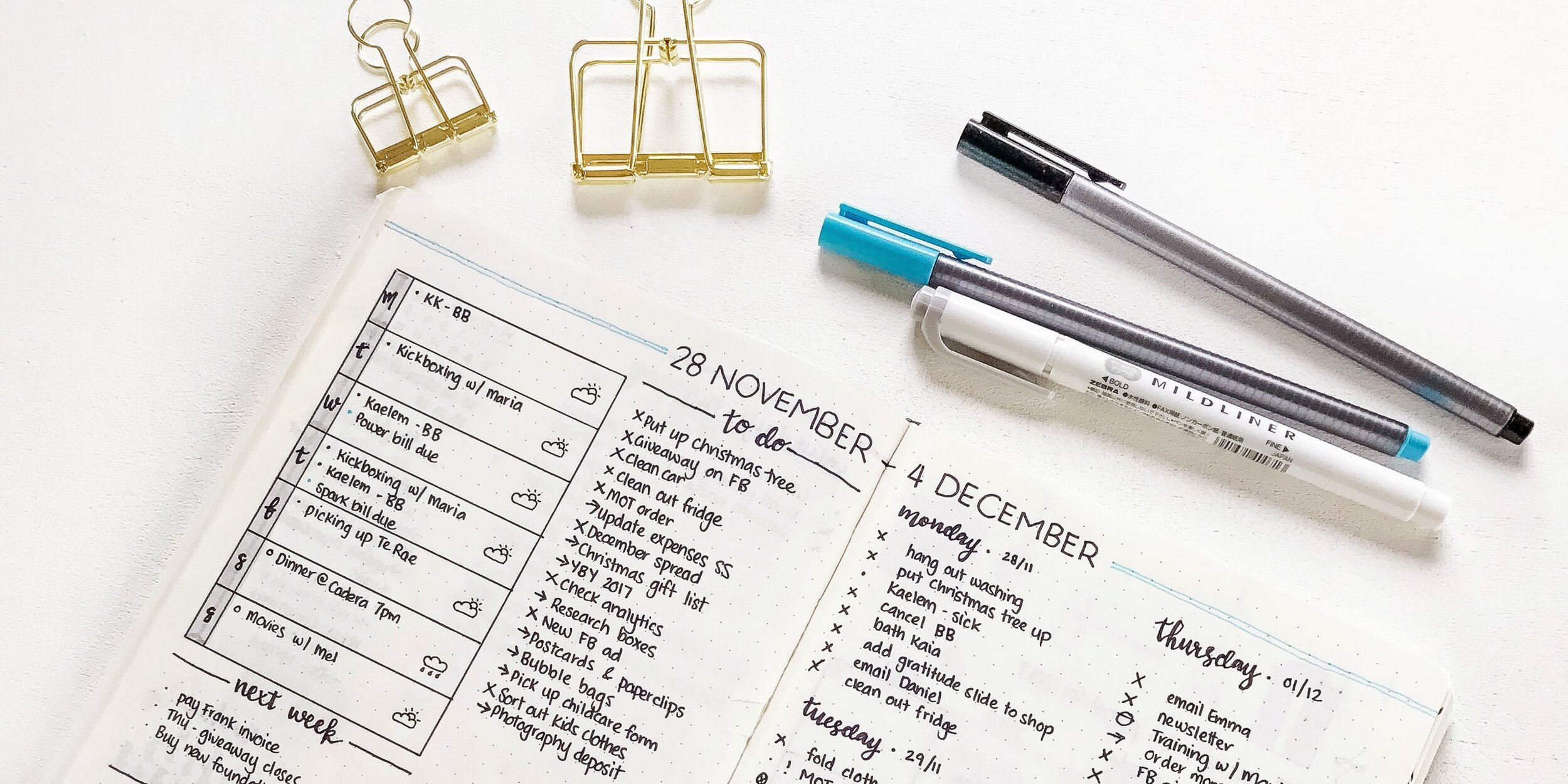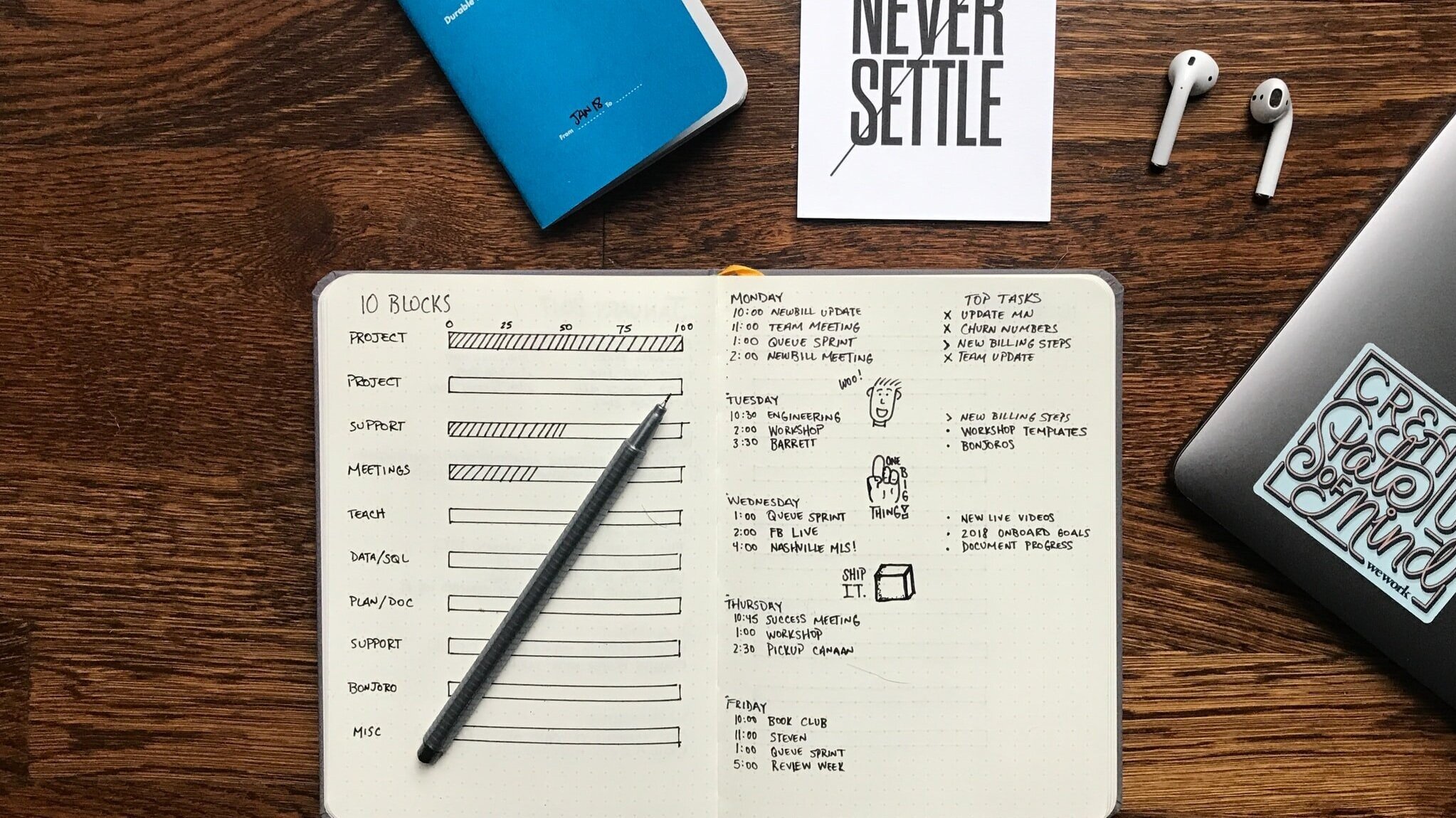Art and Organization through Bullet Journaling
Bullet journaling, affectionately abbreviated to BuJo, has taken the world by storm. Scrolling through Instagram and YouTube, I have scrolled past impressive pages of pastel highlighter and organized pages of to-do lists. Though bullet journaling is more involved than using a regular agenda or planner, it offers a platform for creativity, organization, and individuality.
Bullet journaling is a hobby that nearly everyone can start because you only need a ruler, a lined or graph notebook, and a few colored pens. Some people will invest in supplies that make them feel happy, like their favorite color highlighter or cute stickers. Outside of this, there isn’t much else that is needed besides your time. Bullet journaling, depending on how complex your journal is, can take a few hours a month to keep up with. Even on the day-to-day, BuJo requires you to spend a few minutes writing down your thoughts and plans, but overall, taking the time to create a bullet journal is well-worth it. Many people say that their bullet journal helps them organize their plans and feel better about starting their weeks.
Compared to using a regular, pre-set planner, BuJo breaks the mold and gives people space to set up their own goals and schedules to what best fits their needs. Bullet journalers can set up their journal to include sections to track their feelings, long-term goals, and to-do lists. With this being said, there is no right or wrong way to bullet journal. Many bullet journalers prefer a cleaner look that is easy to read, but others use their bullet journals as a place to jot down notes and random thoughts with fun pens. Above all, BuJo is not about what your final product looks like, it’s about how it makes you feel.
For those who prefer more structured bullet journaling, the internet has many community forums to share ideas, including Pinterest, Reddit, and the bulletjournal.com community. Many first-time bullet journalers start their journals by creating a spread for the month, a spread for the week, and a space to set their goals and intentions. In reference to the month and week spreads, lots of bullet journalers opt to create a log, which is more linear and easier to create than the many little boxes for each day of the month.
Prioritizing tasks with bullets is also useful. Some people use a system of bullet points to help organize their goals. Using a rounded bullet can mean one thing, while a dash or a star in front of a task might have another meaning. This helps people sort out what they need to do by labeling each section as a part of their work life, personal life, or schoolwork. Using different bullets could also set apart events, tasks, or notes. Then, most bullet journalers come up with a system to track their progress on their goals. This could simply be crossing out the item or adding a mark next to it.
Photo: Reddit
Using and understanding shorthand notes can be helpful. Creating your own system of shorthand and rapid logging allows you to save time writing things down and leaves more space in your bullet journal. Most people’s shorthand includes using a symbol or writing down a single letter abbreviation. For example, if you have an English class that you regularly have homework for, you could abbreviate it with EN or write all of your English assignments in purple pen.
Photo: bulletjournal.com
These are just some ideas to get you thinking about how you may want to set up your own bullet journal. It’s important that you feel comfortable with the style you create for yourself and that you feel like it is functional for your purposes. If you are interested in exploring more styles and techniques for bullet journaling, I would suggest checking out Instagram, YouTube, or bulletjournal.com.
Bulletjournal.com is a website created by Ryder Carroll, one of the people who brought BuJo into the mainstream. Though some features of the website cost money, there are lots of free resources available and a blog where people can share their ideas. If you become particularly involved with BuJo, there is also a bulletjournal.com app to help you plan your pages.
On social media, simply searching #bulletjournaling is a great start to exploring different page set ups and themes for your journal. Here are some of my favorites BuJo Instagram posts:






Photos: from Instagram @bujosonia, @bujoforstars, @blossom_bujo, @allorasbujo, @showmeyourplanner, @bujoandcookies
All in all, bullet journaling offers a meaningful way for people to organize their lives and to have a creative outlet. There are a lot of factors to consider when first starting your bullet journal, like how you will set up your pages, what you will track, and how you will use symbols. Though getting started may seem overwhelming at first, there are many ways to find inspiration in other people’s work. I hope that you pull out your pen and notebook soon to get started!
Vocabulary list:
affectionately (adv.): showing affection or good feelings towards someone or something
abbreviate (verb): to shorten a piece of text
invest (v.): to put time, money, or energy into something in hopes of getting a return
“breaks the mold” (phrase): to do something in a new or innovative way
jot (v.): to write something quickly or casually
opt (v.): to choose
linear (adj.): taking the shape of a line, having the quality of being straight
prioritize (v.): treating something importantly
shorthand (n.): a style of writing that incorporates abbreviations or symbols so that it can be written and read faster
technique (n.): style of doing something, often requiring learned skills
Bridgette Lang is an undergraduate student studying International Relations at Boston University. On campus, she helps run a collegiate Model United Nations Conference and manages finances for BU College Democrats. In her free time, Bridgette enjoys traveling, trying to learn Spanish, and visiting with her friends and family back home in Pennsylvania.







